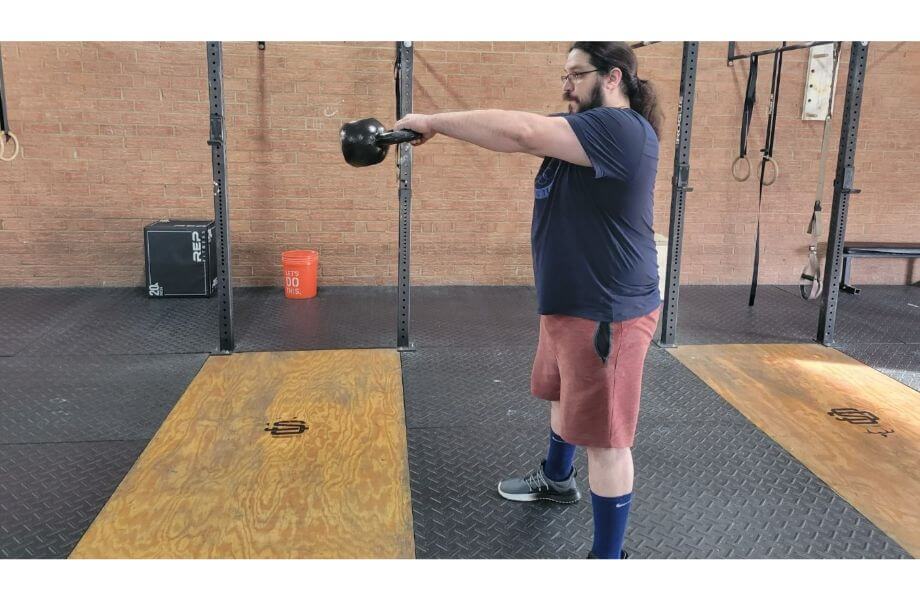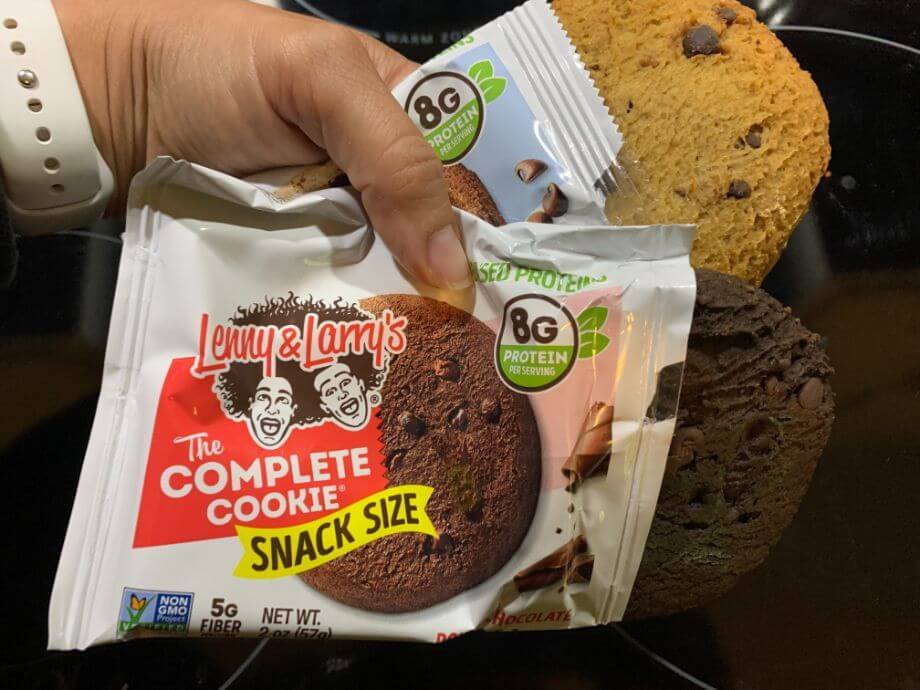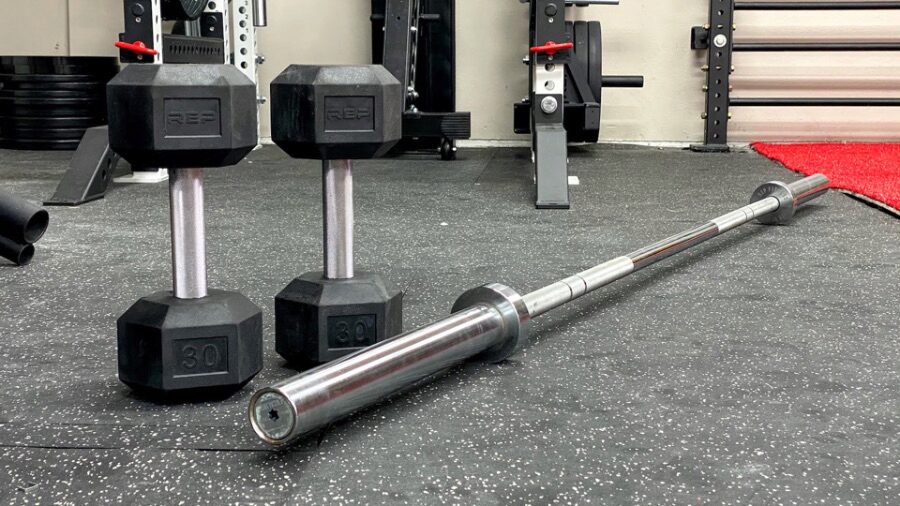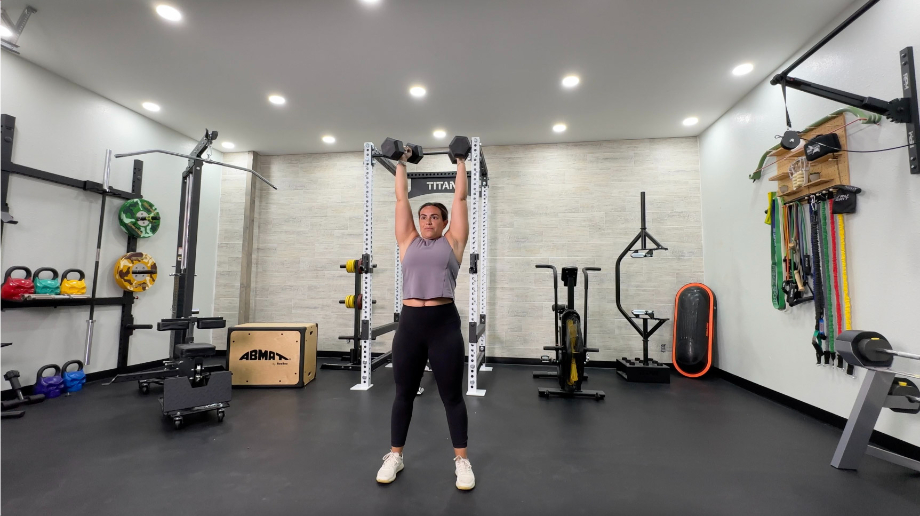Have you ever wondered what those strange-looking, cannonball-with-a-handle-type things at your gym are? There’s nothing to fear—they are kettlebells, a great tool to improve cardio and strength. Because a kettlebell swing is low-impact and high-intensity, it will increase your heart rate. Plus, some strength training exercises with kettlebells are easier for beginners, like the goblet squat and overhead presses.
RELATED: Best Kettlebells for Your Home Workout
A kettlebell is an excellent tool for the beginner to advanced exerciser, but we have the workout for you if you’re just starting your workout journey. Here we’ll get into a beginner kettlebell workout to help you burn fat, build muscle and strength, and improve your cardiovascular capacity.
Try This Beginner Kettlebell Workout
The following personal trainer-approved kettlebell workout is separated into Workout A and Workout B; you’ll alternate between the two workouts 3-4 times per week for 4-6 weeks. Start in the 6-8-rep range for each (unilateral, do the same reps on both sides) and add a rep each time you do the workout until you get into the range of 15-20 reps.
The workouts will be performed as a circuit, performing one exercise after another. You’ll rest a little between exercises and 1-2 minutes after each circuit. Aim for 3-4 circuits for each workout.
Workout A
- Circuit: Repeat 3-4 times
- Kettlebell swing, 6-8 reps per side, no rest
- Overhead press, 6-8 reps per side, no rest
- Kettlebell row, 6-8 reps per side, no rest
- Goblet squat, 6-8 reps, no rest
- Kettlebe
Workout B
- Circuit: Repeat 3-4 times
- Goblet squat, 6-8 reps, no rest
- Overhead press, 6-8 reps per side, no rest
- Kettlebell row, 6-8 reps per side, no rest
- Front rack reverse lunge, 6-8 reps per side, no rest
- Kettlebell suitcase carry 40 yards per side, rest 1-2 min.
Kettlebell Halo
Why Do It: The kettlebell halo improves shoulder mobility and core stability as your obliques kick in to avoid rotation.
How to Do It:
- Stand holding a kettlebell in front of you, gripping it by the horns in front of your chest.
- Lift one elbow up and over your head, rotating the kettlebell around your head and bringing the other elbow up as you complete the circle. The full circle will bring the kettlebell back to the starting position in front of your chest. Keep your back straight and neck neutral.
- That is one complete repetition. Repeat for the recommended number of reps in each direction.
Form Tip: You get into trouble performing this move quickly. Perform slowly, feeling the kettlebell brush against your neck.
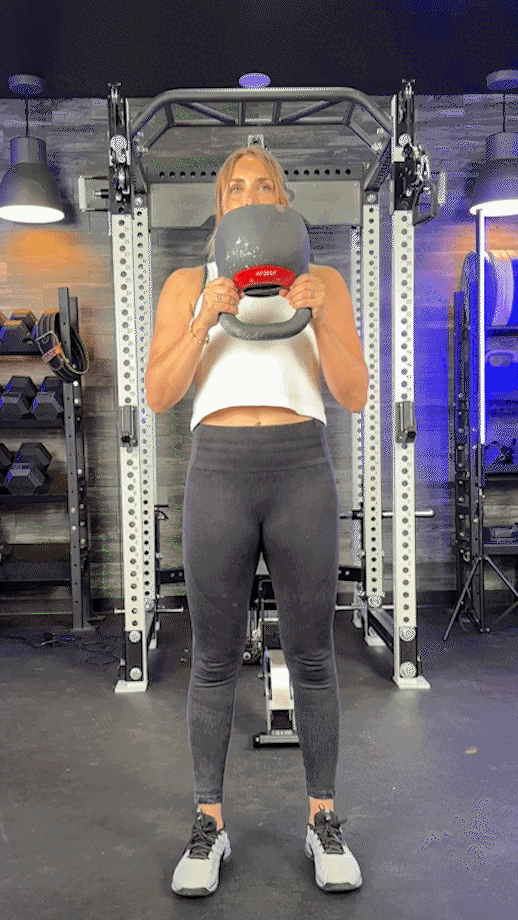
Kettlebell Slingshot
Why Do It: The kettlebell slingshot is a versatile exercise that can be used in a warm-up or workout. You’ll improve your grip and core strength and shoulder stability.
How to Do It:
- Stand with good posture holding a kettlebell with your right hand in front of your right thigh.
- Gently swing the kettlebell behind your back, reaching to grab it with your left hand so that the kettlebell moves around your body in a circle.
- As you grab it with your left hand, let go with your right hand so you can swing the kettlebell the rest of the way around your body to return to the starting position. Make sure you maintain a firm grip on the kettlebell at all times.
Go in one direction for time or reps, then switch sides and go in the opposite direction.
Form Tip: Start rotating slowly and with a lightweight kettlebell to get the hang of this movement.
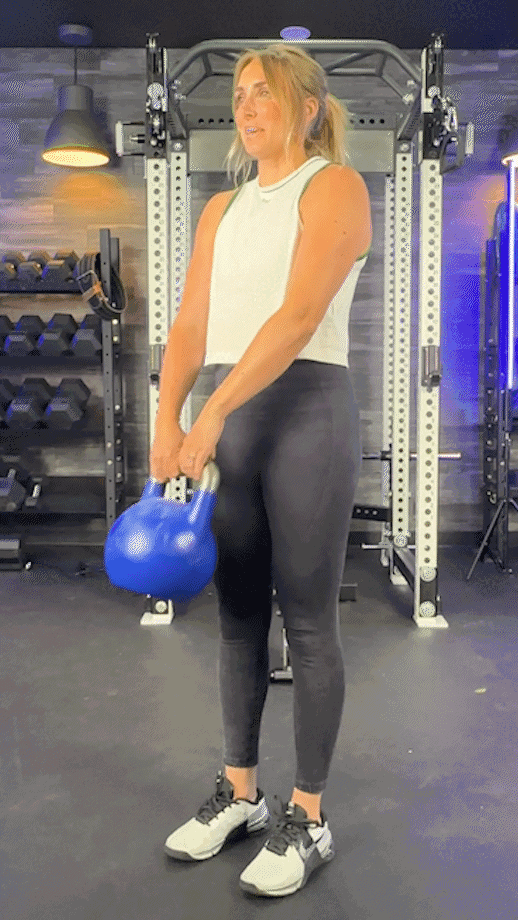
Kettlebell Goblet Squat
Why Do It: Holding the kettlebell anteriorly with the kettlebell goblet squat encourages good squats and benefits core stability.
How to Do It:
- Bring a kettlebell up to your chest, holding it by the horns. Step your feet shoulder-width apart.
- Inhale and push your hips back as you bend your knees, lowering your body until your thighs are at or just below parallel. Keep your back straight and your weight in your heels.
- Exhale as you press through your heels and extend through your knees and hips, returning to the standing position. Hold the kettlebell in front of your chest as you move.
- Repeat for the recommended number of repetitions.
Form Tip: If someone needs help with squat depth and positioning, performing a box squat will help.
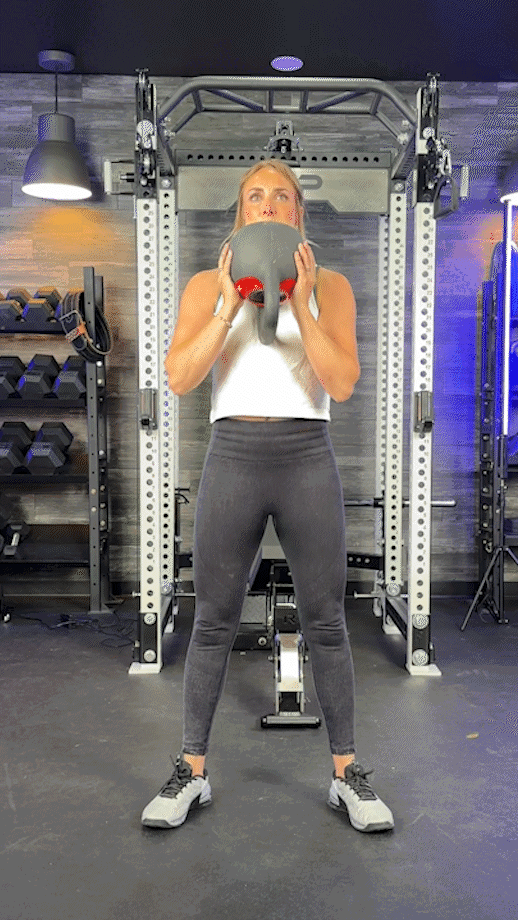
Kettlebell Overhead Press
Why Do It: Having the kettlebell resting against your forearm demands more stability, postural control, and upper back engagement. And kettlebells naturally angle with your scapula when pressing overhead, making it easier for a beginner to perform the move.
How to Do It:
- Stand holding a kettlebell in a front-racked position, holding your free arm out to the side for balance. Set your feet hip-width apart, and engage your glutes and core.
- Rotate your arm out so your palm faces forward and your elbow is bent at 90 degrees.
- Exhale and press the kettlebell overhead, keeping your back straight and your neck neutral as you press. Inhale and lower back down with control.
- Repeat for the recommended number of repetitions on each side.
Form Tip: Many lifters get into trouble by overarching their lower back to press the weight overhead. Avoid this by engaging your glutes and using some leg drive.
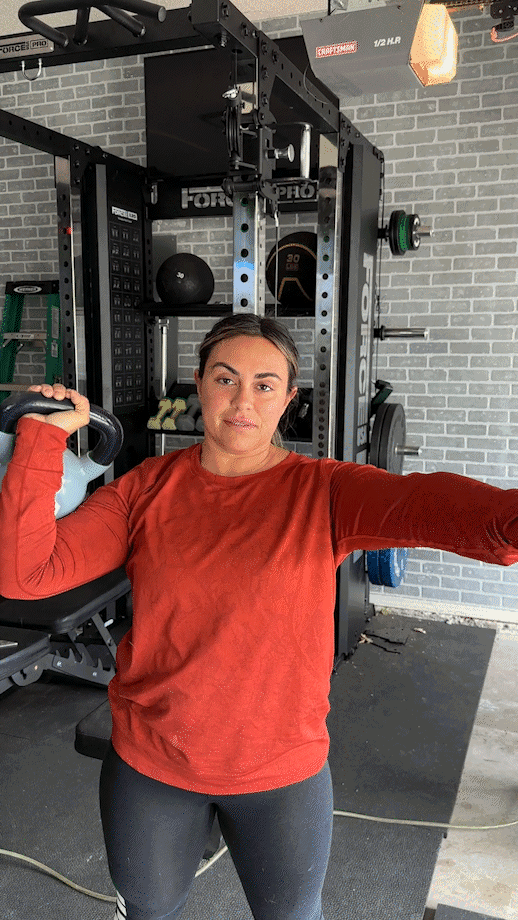
Kettlebell Swing
Why Do It: The kettlebell swing is a one-stop to improve grip, glute strength, and cardiovascular conditioning.
How to Do It:
- Stand holding a kettlebell with both hands. Step your feet shoulder-width apart with your toes pointed forward.
- Inhale as you hinge back, dropping the kettlebell under your hips. Keep your back straight and chest up.
- In one motion, push through your heels and extend your hips, using the momentum generated by your glutes and quads to swing the kettlebell up to approximately chest height.
- Control the swing of the kettlebell with your arms, following it back down by bending your legs to reset for the next rep. Exhale with each swing.
- Repeat for the recommended number of reps.
Form Tip: Paying attention to your set-up ensures a better kettlebell swing.
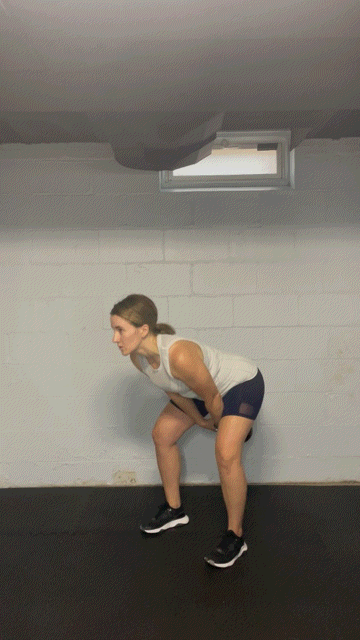
Kettlebell Row
Why Do It: All rows are great for the back, but the kettlebell row, due to the offset load of the kettlebell, requires more stabilization and grip strength.
How to Do It:
Note: There are multiple variations, and this describes just one.
- Assume a staggered stance with your right foot forward and your left foot back, holding a kettlebell in one hand. Hinge at the waist to bend forward slightly, keeping your back straight and your neck neutral.
- Exhale and row the kettlebell up toward your hip, keeping your elbow close to your body and your palm facing in. Inhale and lower down with control. Keep your back straight and your neck neutral as you row.
- Repeat for the recommended number of repetitions with each arm.
Form Tip: If it feels uncomfortable for your lower back in the staggered position, try it with your feet hip-width apart or try placing your free hand on a weight bench.
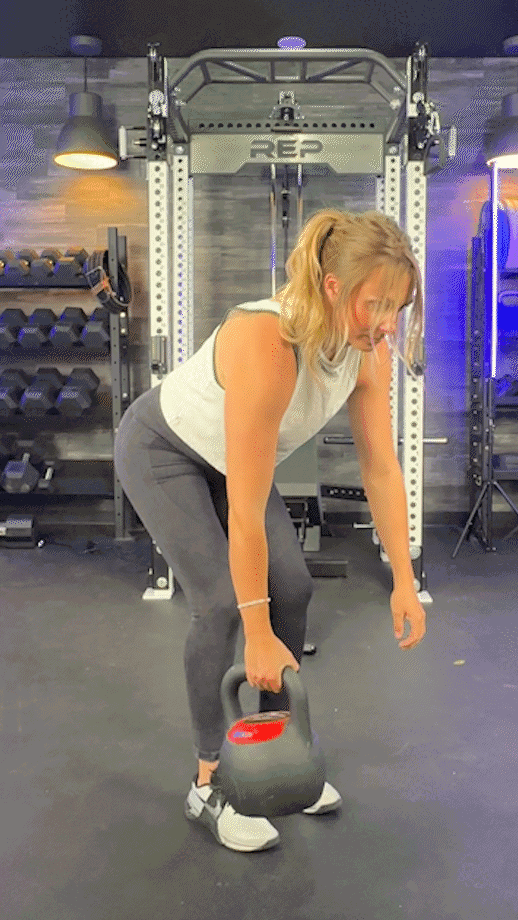
Kettlebell Front-Racked Reverse Lunge
Why Do It: All reverse lunge variations improve single-leg strength and balance, but the kettlebell front-racked variation improves upper back and anterior core strength.
How to Do It:
- Stand holding a kettlebell in a front-racked position with your feet hip-width apart and your toes pointed forward,
- Step back with the same leg, planting your foot on the floor behind you and lowering your back knee down. Keep your chest up and your core engaged as you bend both knees to 90 degrees.
- Push up off your back foot, stepping forward to return to the starting position.
- Repeat for the recommended number of reps on each side, either one side at a time or alternating.
RELATED: What Muscles Do Lunges Work?
Form Tip: Choose a lighter weight to get accustomed to this movement before going heavier.
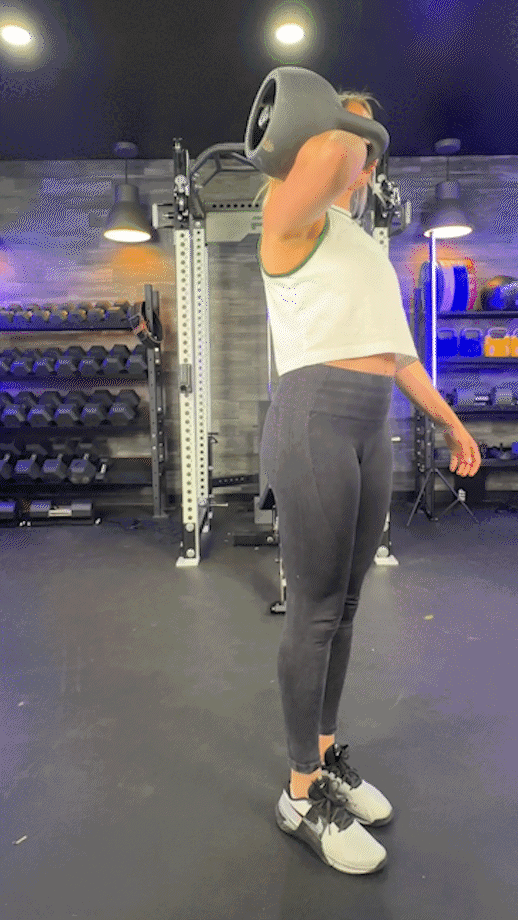
Kettlebell Suitcase Carry
Why Do It: The kettlebell suitcase carry reduces grip strength imbalances between sides while strengthening your oblique muscles and posture.
How to Do It:
- Grip a single kettlebell with your left hand and ensure your shoulders are even and your chest is up.
- Walk for the required distance, using your right arm for balance, then swap hands and repeat.
Form Tip: Checking your shoulder position in the mirror helps you avoid having one shoulder drop lower than the other.
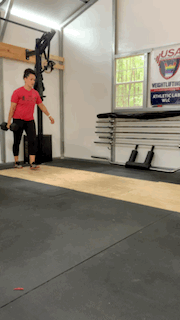
What Is the Best Kettlebell Weight for Me?
Suggesting uniform weight recommendations for anybody, let alone beginners, is difficult. If you cannot complete the desired rep range or go through a full range of motion, the weight is too heavy, and if you don’t feel that the moves are challenging, the weight is too light. This holds true for kettlebells and any other weighted movements. But a good beginning point with kettlebell weight for men is from 26 pounds (12 kg) to 53 pounds (24 kg), and for women, it’s 18 pounds (8 kg) to 35 pounds (16 kg).
Which Kettlebell is Best for Me?
Did you know there is more than one type of kettlebell? Here, we’ll discuss how beginners can pick a kettlebell for their home gym, depending on their goals and budget.
Standard vs Competition
Competition kettlebells are larger than the standard kettlebell with a smaller handle and are the same size regardless of their weight. Standard kettlebells have a larger domed handle, and the overall size increases with the weight. Doing two-handed movements with competition kettlebells is challenging, so beginners should probably stick with the standard kettlebell.
Fixed vs Adjustable
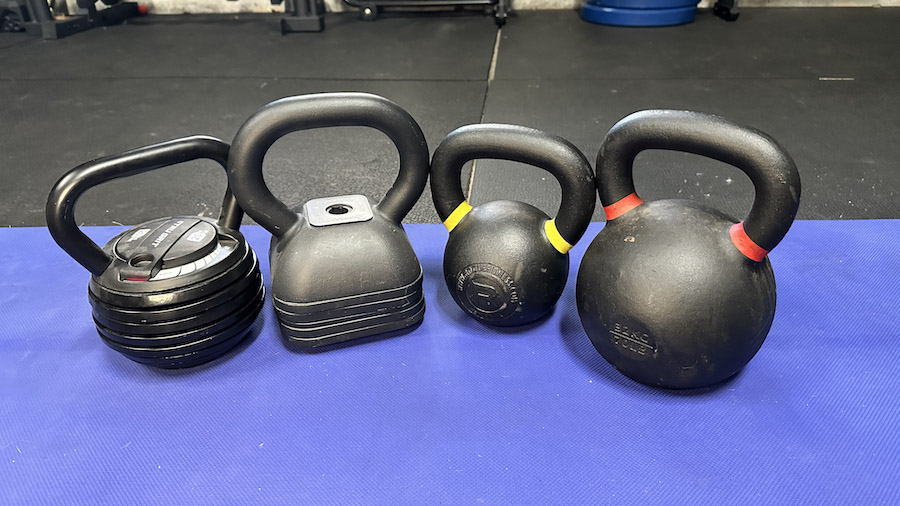
The most significant difference between the fixed and adjustable kettlebells is exactly what it sounds like—you can change the adjustable kettlebell to be various weights. The adjustable is the way to go if you lack space in your home gym. If you have the space and you don’t like adjusting the weight between sets and exercises, then the fixed kettlebell should be your go-to.
Handle
We discussed the handle size difference between the competition and standard kettlebells, but most kettlebells come with a 33 millimeter handle or a 35 millimeter handle. If you have smaller hands, the 33 millimeter should be your go-to; if you have larger hands, go with the 35 millimeter. The best way is to test the handle to determine your comfort level.
The Benefits of Kettlebell Workouts
The unique shape of kettlebells with the weight away from the handle (as opposed to dumbbells), provides an offset load that challenges your body’s stability and balance. Why? Due to its shape, each repetition is different, and the offset load requires more of your body stabilizers to kick in. Here are three significant benefits of kettlebell training.
Core Strength
Sure, the offset load kicks core stability into high gear, but the ability to hold the kettlebell in various positions (goblet, rack, and overhead) challenges your core strength, too. Your anterior core (rectus abdominis and obliques) engages to keep good posture with the goblet squat and front-racked reverse lunge, and the obliques get a workout with the slingshot, halo, and offset carry.
Grip Strength
Have you ever heard the phrase, “if you cannot grip it, you cannot rip it?” Same idea applies with the kettlebell because many exercises require you to grip the kettlebell for an extended time, and this helps improve your grip strength and endurance.
Better Conditioning
The kettlebell’s versatility to swing, snatch, and squat with little to no transition time between exercises makes it an excellent tool for improving cardiovascular fitness, grip strength, and conditioning. You will not get all of this from any cardio machine, making the kettlebell a great tool to improve strength and conditioning simultaneously.
What Muscles Do Kettlebell Workouts Work?
The kettlebell’s versatility and unique shape allows you to do various exercises easily while keeping your heart rate up. Kettlebell exercises are often compound exercises that involve several muscle groups at once.
Let’s look at the upper body and lower body muscles trained with the eight kettlebell exercises above.
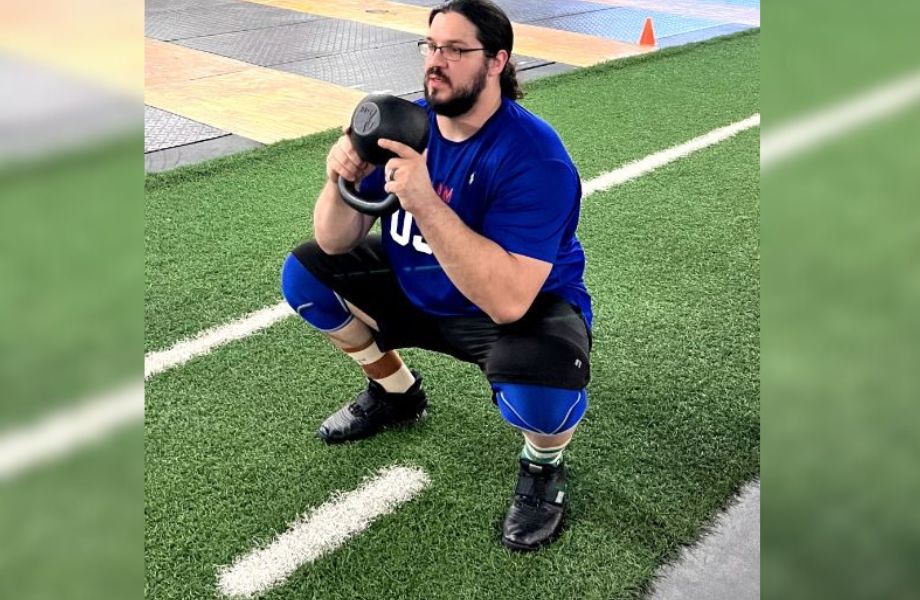
Kettlebell Halo: Obliques, deltoids, rotator cuff, biceps, and forearms.
Kettlebell Slingshot: Forearms, obliques, glutes, and rectus abdominis
Goblet Squat: Forearms, upper back, quadriceps, hamstrings, and glutes
Suitcase Carry: Forearms, deltoids, upper back, and glutes
Front-Racked Reverse Lunge: Upper back, glutes, quadriceps, and hamstrings
Kettlebell Rows: Forearms, biceps, upper back, and lats
Overhead Press: Deltoids, triceps, and upper back
Kettlebell Swing: Forearms, upper back, lower back, glutes, and hamstrings
Beginner Kettlebell Workouts: Final Thoughts
Kettlebells seem intimidating to the beginner because of their shape and unique look, but some of the best kettlebell exercises are actually easier because of the kettlebell, including the overhead press and goblet squat. Training with the kettlebell will give the beginner a full-body workout and improve:
- Grip strength
- Cardiovascular conditioning
- Core strength and endurance
A workout routine with kettlebells is excellent whether you’re a beginner or an advanced exerciser when you take your time to learn proper form. What are you waiting for? Get swinging today!
Keyword: Q&A
What weight kettlebell should a beginner use?
A good starting weight for the kettlebell is 18 pounds (8 kilograms) to 35 pounds (16 kilograms) for females and 26 pounds (12 kilograms) to 53 pounds (24 kilograms) for men.
Are kettlebell workouts suitable for beginners?
When the beginner takes the time to learn each move, start light, and perform the movement carefully, the kettlebell workouts above are suitable for beginners. Ensure you start with a weight that allows you to do each exercise with good form.
Is a 10-minute kettlebell workout enough?
A 10-minute kettlebell workout is enough to get in a full-body kettlebell workout to challenge every muscle in your body and your lungs1. The kettlebell allows easy transitions between exercises that will enable you to get in a workout in a short amount of time.
Is a kettlebell good for burning belly fat?
When you’re in a caloric deficit and exercise with good intensity, the kettlebell is a fantastic tool for burning belly fat and all other fat around your body; remember, you cannot pick and choose where you burn fat. The kettlebell workouts blend strength and cardio, allowing you to simultaneously add strength and burn fat.
References
- Farrar RE, Mayhew JL, Koch AJ. Oxygen cost of kettlebell swings. J Strength Cond Res. 2010 Apr;24(4):1034-6. doi: 10.1519/JSC.0b013e3181d15516. PMID: 20300022.


